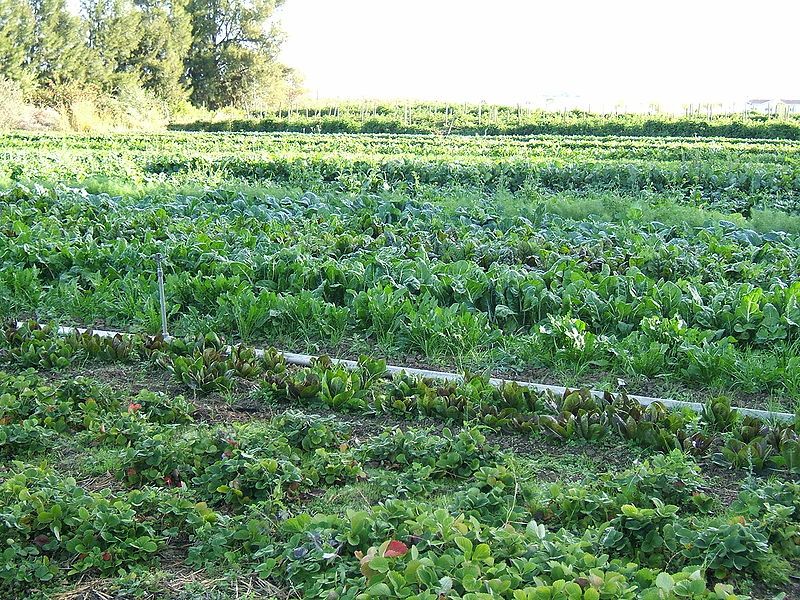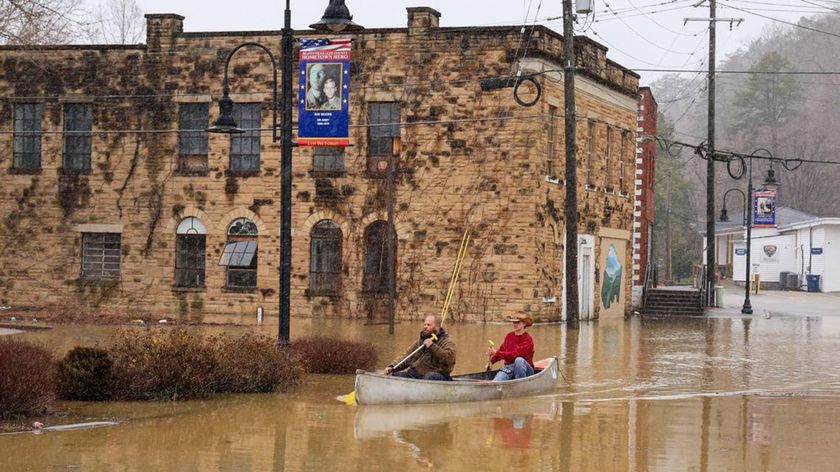
Precision Farming Gains Global Foothold (Op-Ed)

Lloyd Treinish leads the environmental science team in the Industry Solutions Department at the IBM Thomas J. Watson Research Center. A co-developer of IBM's Deep Thunder precision agriculture system, he contributed this article to LiveScience's Expert Voices: Op-Ed & Insights.
Our world is getting larger … and hungrier … with every tick of the clock.
Indeed, each second the world's population grows by two more people, and by 2050, food production must increase by at least 70 percent to keep pace.
Unfortunately, about half of the world's food is never consumed due to inefficiencies in the harvesting, storage and delivery of crops. Even in developed nations, about 30 percent of purchased food ends up going to waste, and supply-chain inefficiencies only exacerbate the problem.
Certainly, weather-related events — like the current and long-lasting drought in portions of the U.S. — add further complexity to the science of farming, as resultant crop damage, food supply shortages and rising commodities prices frequently illustrate.
To help reverse this sobering trend, and to generate enough food to meet the ever-growing demands of a growing global population, today's — and tomorrow's — agribusinesses need to embrace smarter farming methods.
Fortunately, the technology to do so is available — and working — right now.
Sign up for the Live Science daily newsletter now
Get the world’s most fascinating discoveries delivered straight to your inbox.
Fueling better farming is a practice known as precision agriculture, which uses extensive data from a farmer's field and the surrounding region to help predict weather conditions and optimize operations. While collecting real-time data on weather, soil, health of crops and air quality is important, as is the availability of equipment and labor, predictive analytics can be much a smarter approach for making better farming decisions.
Precision agriculture can help farmers from Brunei to Brazil pinpoint the best time for harvesting to mitigate crop damage and loss; determine how many workers are needed at harvest time; and show how and when to deploy delivery trucks to ensure immediate shipment — an especially important factor in farmlands where the lack of paved roads can paralyze distribution.
Those and other smarter farming methods — including techniques used early in the growing cycle — are reducing weather-related crop damage by as much as 25 percent in some areas, ensuring that fewer crops are wasted and more food makes it to the dinner table.
The development and use of those predictive, analytics based techniques and technologies is not limited to mega-farms. Small, family-run fields and co-ops, worldwide, are also reaping better results by maximizing production and reducing waste.
According to the U.S. Department of Agriculture, weather-related incidents cause 90 percent of all crop losses. Precision agriculture helps address that problem by improving weather forecasting and modeling, and localizing it — even within a particular farm. Knowing that it will rain in Nairobi, Kenya is irrelevant if skies are clear above your farm just outside of the city.
At IBM, we developed a precision agriculture weather-modeling service using Deep Thunder, our Big Data analytics technology, for local, customized, high-resolution and rapid weather predictions. It gathers data from sensors placed throughout fields that measure the temperature and moisture levels in soil and surrounding air. That information is combined with multi-spectral images of fields taken by advanced camera systems from satellites and airplanes.
The system then combines the field data with a diversity of public data from the National Oceanic and Atmospheric Administration, the National Aeronautics and Space Administration and the U.S .Geological Survey, and private data from companies like Earth Networks. A supercomputer processes the combined data and generates a four-dimensional mathematical model derived from the physics of the atmosphere.
With high accuracy, Deep Thunder can deliver hyper-localized weather conditions up to three days in advance, with calculations as fine as a single mile and as granular as every 10 minutes.
In practical terms, a farmer armed with precise weather forecasting information may choose to hold off on fertilizing an area of a farm expecting heavy rains; or, he may irrigate only that portion of the farm that will not receive rainfall. With 70 percent of the world's freshwater supply already going to agriculture, every drop counts.
Also, better understanding — and predicting — of weather effects on transportation networks can help farmers make better decisions about which routes and methods will be fastest to transport harvested food. That is especially critical in countries like Brazil, where many of the roads are unpaved and heavy rain can cause trucks to get stuck in mud.
Coupling predictive analytics and modeling techniques with other sophisticated farming methods can prove to be quite beneficial when resources — like water — are at a premium.
For instance, many farmers are now using methods like flow-through irrigation, drip irrigation, micro-sprinklers and more efficient use of groundwater to increase yields. Getting more "crop per drop" not only improves farm productivity but provides enough return on investment to fund additional high-tech solutions.
While the days of farmers using the divining rod to find water are long since passed, many farmers — especially in developing countries — still rely too much on guesswork in making planting, irrigation and harvesting decisions.
By combining supercomputing and Big Data analytics with other technological innovations, even farmers with modest means can bolster production and profits. And all of us who eat will be grateful.
The views expressed are those of the author and do not necessarily reflect the views of the publisher.
Most Popular




